If I build a railgun and apply say, 1 million watts, to the circuit to try to power a projectile forward through electromotive force, will it really matter if that 1 million watts of power is applied for just an instantaneous time say, 1 picosecond? Will that massive amount of power even going to matter to produce any significant work, assuming nothing will get welded in place as result?
-
41 Million watts means 1 Million Joule (1 MJ) during one second. You have to wait the full 1 second to get all those Joules out. If you only have 1 ps then you get 10^-12 of that meaning 1 uJ (that is 1 micro-Joule = 10^-6 Joule). If you want to put that 1 MJ in that 1 ps then you would have an equivalent power of 10^18 Watt = 1 Exa Watt. Do all the power stations in the world added together output that amount of power? I doubt it. So this is not how it is done. See Neil's answer. – Bimpelrekkie Jun 09 '20 at 12:04
-
@Bimpelrekkie The sun produces 3.8*10^36 Watts. Only 18 orders of magnitude larger but that is spread out over a huge volume and any railgun will be of a volume far smaller than 18 orders of magnitude. The sun's volume is on the order of 18 orders of magnitude larger...THAN THE EARTH. – DKNguyen Jun 09 '20 at 13:53
-
1At one microjoule, your victim will die of boredom waiting for the projectile to leave the gun. – Jun 09 '20 at 14:59
-
1What, exactly, do you mean by "does it matter"? Matter in what way(s)? – evildemonic Jun 09 '20 at 16:18
2 Answers
One million watts for 1 picosecond is only 1 micro Joule, not a lot of energy. If the conversion of electrical energy to kinetic is 100% efficient, then you can work out through \$\frac{1}{2}mv^2\$ how fast your projectile is going to be moving after acquiring 1 µJ.
However, we don't tend to power railguns with a specific power for a specific time. Where would you get a one megawatt power supply? Instead, we tend to build a storage system, maybe a bunch of capacitors, maybe a spinning alternator-based machine called a compulsator, that stores a certain amount of energy. Then the challenge is to dump that energy store into the railgun load in the right sort of length of time, which generally involves controlling the inductance of the supply, switches, cables, everything really. So you'll start with an energy, not a power, and work from there.
Let's do some sums with some real data. Let's say you put together a number of capacitors, say from the CD942 range, very high current capability, probably overkill, but useful to get ballpark figures. A 2kV 150nF cap stores 300 mJ when fully charged, and occupies a space of around 30x30x50 mm. So 1000 would fit into a milk-crate sort of volume, and you'd be able to lift it (I wouldn't). That will store 300 J. If discharged in 100 uS, that would deliver a power of 3 MW.
That's still rather on the low side for stored power for a railgun, which scales to small sizes very badly. Have a look at this paper for a railgun supply, where they talk about mega-Joule levels of stored energy, delivered over a few milliseconds.
- 158,152
- 3
- 173
- 387
-
If much work is spent on accumulating 1 million watts only to have such power fully expended within 1 picosecond to produce 1 micro joule, then isn't that an insane level of inefficiency? Assuming that 1 million watts is the worth stored in a bunch of capacitors, then what can I do to make them discharged equally over a longer time period, such as 1 second? – Dorky Jun 09 '20 at 12:50
-
2You can't store power (watts). You store energy (joules or watt-seconds / kilowatt-hours). Try rewriting that comment again in the light of that. – Transistor Jun 09 '20 at 13:29
-
Dorky - stretching the stored-power-dump in time need not be inefficient at all. As Neil has suggested, you use inductors, capacitors to stretch the discharge time. These elements don't dissipate power (only resistance does that). A fast pulse discharge as used in pulsed lasers might also use transmission lines - likely not appropriate for a longer-discharge in a rail gun. We can usually accumulate the energy inefficiently over a very long charging time, and concentrate on efficient use of L & C during dump. – glen_geek Jun 09 '20 at 13:31
-
@Dorky The most inefficient things are those that use their energy the fastest. They have the most losses relative to output. – DKNguyen Jun 09 '20 at 13:48
-
@Dorky You don't accumulate 1 million watts, you accumulate 1 uJ. If you discharge that in 1 pS, that's 1 MW. If discharged in 1 uS, it's 1 watt. – Neil_UK Jun 09 '20 at 13:48
-
2Saying you accumulated Watts is is like saying you traveled a distance of 50km/h. – DKNguyen Jun 09 '20 at 13:50
-
@Neil_UK I think that paper for a railgun supply has the wrong url, but I get your point. – Dorky Jun 10 '20 at 01:46
-
To supplement the existing answer with some perspective.
One megawatt is not really a crazy amount of power. A typical electrical locomotive has a steady output power of 6.4 MW. Weapons would typically use more extreme forces/powers than this because (as you correctly suggested) they release it during a short period of time.
Regarding the resulting projectile energy, see this table for some examples. (Image source)

- 1,584
- 1
- 14
- 21